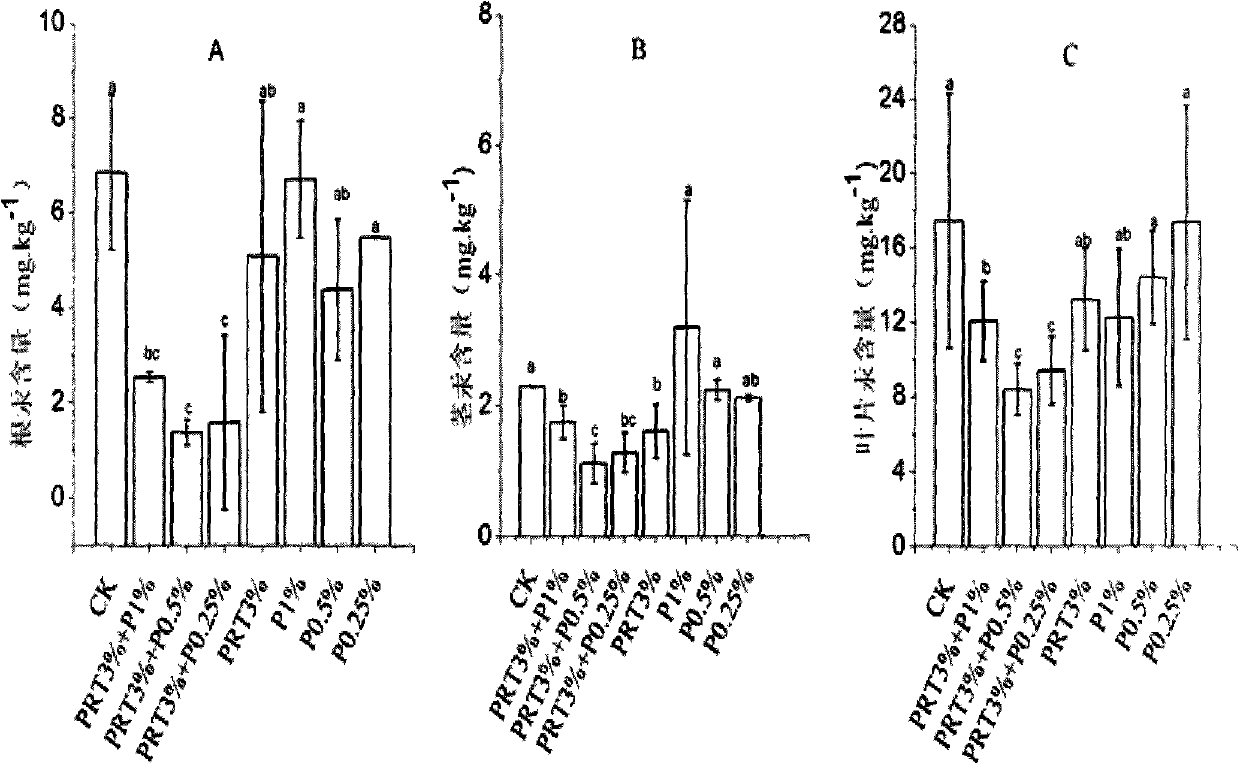Passivating agent for mercury-polluted soil remediation
A passivating agent, mercury pollution technology, applied in the field of agricultural soil remediation, can solve problems such as low effectiveness and poor plant absorption capacity
- Summary
- Abstract
- Description
- Claims
- Application Information
AI Technical Summary
Problems solved by technology
Method used
Image
Examples
Embodiment 1
[0021] Bentonite is represented by PRT, and diammonium hydrogen phosphate is represented by P.
[0022] A mercury-contaminated farmland was divided into 24 plots of 1m×2m, with an interval of 30cm between plots. Bentonite and diammonium hydrogen phosphate were added in proportion to the soil mass, and a total of 8 treatments were established: ① control (CK) ② PRT3%+P1% ③ PRT3%+P0.5% ④ PRT3%+P0.25% ⑤ PRT3% ⑥ P1% ⑦ P0.5 %⑧P0.25%. The soil remediation depth is 16 cm. Each treatment was repeated 3 times. The passivating agent was spread manually and tilled twice with a rotary tiller to mix it evenly with the soil. One month after the passivation agent was added to the soil, Chinese cabbage (Brassica campestris L) and radish (Raphanus sativus) were planted. During crop growth, weeding, fertilization, pesticide spraying and irrigation are carried out in accordance with local production management methods. The crops are harvested after 40 days of growth. Each plot randomly coll...
PUM
 Login to View More
Login to View More Abstract
Description
Claims
Application Information
 Login to View More
Login to View More - R&D
- Intellectual Property
- Life Sciences
- Materials
- Tech Scout
- Unparalleled Data Quality
- Higher Quality Content
- 60% Fewer Hallucinations
Browse by: Latest US Patents, China's latest patents, Technical Efficacy Thesaurus, Application Domain, Technology Topic, Popular Technical Reports.
© 2025 PatSnap. All rights reserved.Legal|Privacy policy|Modern Slavery Act Transparency Statement|Sitemap|About US| Contact US: help@patsnap.com



